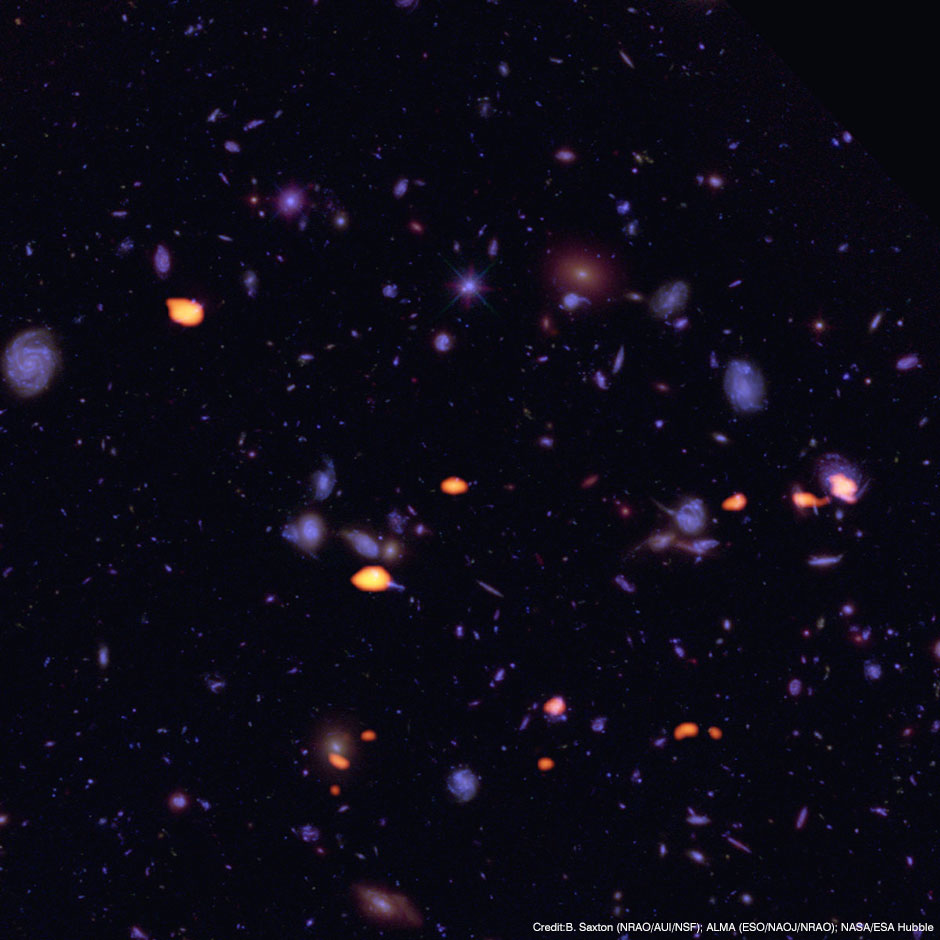Looking into the Depths of the Universe with Two Telescopes
Astrophotography・

This image taken with ALMA and Hubble Space Telescope captures the “Hubble Ultra Deep Field,” the farthest reaches of space. The purple regions are the galaxies (collections of stars) captured by the Hubble Space Telescope. And, the orange areas are the distribution of carbon monoxide gas, which is material for stars, taken with ALMA. Comparing these two data sets, astronomers will tackle the big mystery of how fast the galaxies in the Universe generated stars about 10 billion years ago.
Surveying the Distant Universe with Radio Waves
When observing the Universe with ALMA, we can observe two types of radio waves: emission lines (radio waves emitted only at specific frequencies) released by gaseous materials such as carbon monoxide molecules, carbon atoms, and oxygen atoms; and continuum emission (radio waves emitted over a wide range of frequencies) from solid dust particles about 1 micrometer in size. Since these radio waves are from the interstellar matter that becomes the material for stars, the data acquired by ALMA become clues to understand the temperature, density, and total mass of the stellar material. Also, since the Universe is expanding, the radio waves from distant celestial bodies have their wavelengths stretched. When observing the emission lines, we can also determine the distances to the objects by comparing the frequencies of the reference lines to the actual observed frequencies. This Hubble Ultra Deep Field image looks flat, but when you measure the distances in this way, you can see that actually galaxies at many different distances are superimposed, giving the image depth.
Text by: Masaaki Hiramatsu (NAOJ Chile Observatory)
Translation by: Hiroko Tsuzuki and Ramsey Lundock (Public Relations Center, NAOJ)
Image Data
| Object | Hubble Ultra Deep Field |
|---|---|
| Telescope | ALMA and Hubble Space Telescope |
| Credit | B. Saxton (NRAO/AUI/NSF); ALMA (ESO/NAOJ/NRAO); NASA/ESA Hubble |